Geosynthetics offer cost-effective strategies for mitigating or even eliminating severe flooding in coastal regions.
By Robert M. and George R. Koerner
On September 8, 1900, a Category 4 hurricane struck Galveston, Texas, which is situated on the Gulf of Mexico, averaging about 8 feet (2.4 meters) above sea level. The storm created a 15-foot (4.6-meter) storm surge, killing 8,000 to 12,000 people and causing the destruction of approximately 2,100 homes and buildings. The unfortunate details of this event are recorded in history books and online.
Four actions were subsequently taken by public officials and private homeowners. First, a massive seawall was constructed of reinforced concrete, approximately 17 feet (5.2 meters) high and 16 feet (4.9 meters) thick at its base. Measuring about 10 miles (16 kilometers) long, it still exists today, along with several access gates that are closed during times of flooding. Second, much of the undeveloped city and locations of destroyed property were raised as much as 17 feet (5.2 meters). Third, some homeowners elevated their homes on wooden crib substructures. Fourth, many families and businesses left altogether—some moving to nearby Houston, Texas. As it turns out, of course, this option hardly removed people from the hurricane threat; Hurricane Harvey in August 2017, also a Category 4 hurricane, devastated Houston.
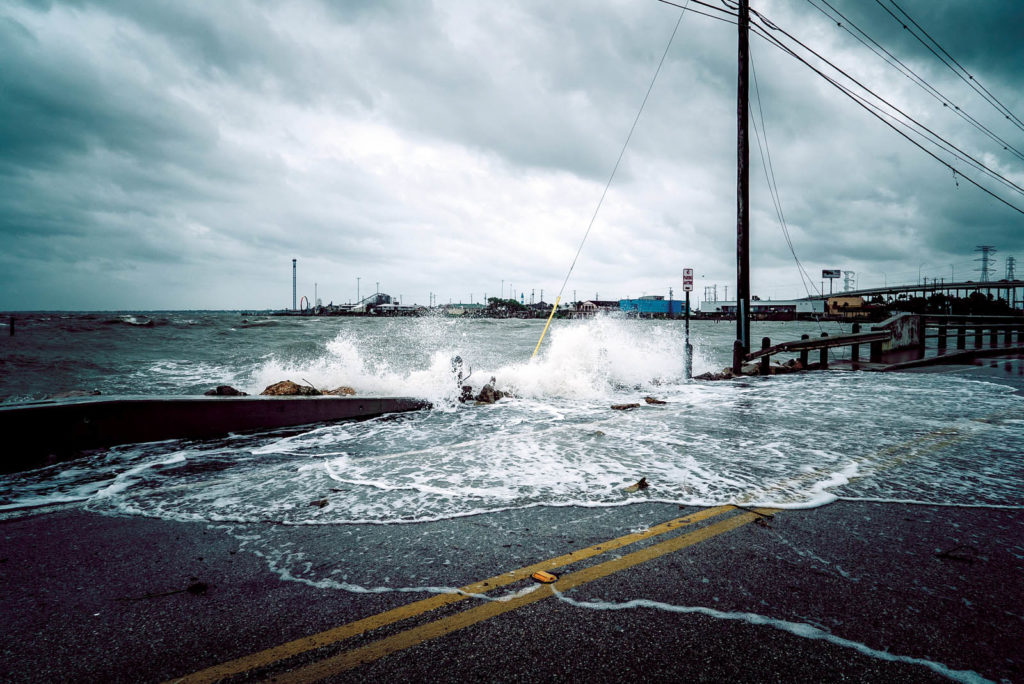
Sea levels rising
Today, 10 percent of the world’s approximately 7.5 billion people live within 33 feet (10 meters) of sea level, and many more live at slightly higher elevations but still very close to coastlines. Protecting people, structures and property as sea level continues to rise in the years ahead promises to be one of the great engineering challenges of the 21st century and beyond, said Robert J. Nicholls, professor of Coastal Engineering at the University of Southampton, during a recent meeting at the National Academy of Engineering.
Dr. Sean Vitousek and his coauthors at the United States Geological Survey (USGS) agency recently demonstrated that a 4-inch (10-centimeter) rise in sea level, which is expected in the near term, can more than double the frequency of coastal flooding for many locations around the globe. The full report, “Doubling of Coastal Flooding Frequency Within Decades Due to Sea-Level Rise,” is published online in “Scientific Reports” at www.nature.com/srep.
As a flood abatement strategy, several geosynthetic systems can mitigate or perhaps even eliminate such severe flooding. Geosynthetics are a group of manufactured materials from various polymers in sheet form used in civil, transportation, hydraulics and environmental engineering applications. They are placed on or within the soil, depending on the site-specific situation. The entire industry has seen considerable growth from its beginning in 1977 (the first international conference) to the current worldwide status, which represents close to eight billion dollars in expenditures.
Four solutions
Geosynthetic systems for flood abatement are usually less expensive and/or require less space (sometimes called a “footprint”) than the Galveston options mentioned previously. Four of them are described here: 1) single or stacked geotextile tubes; 2) geosynthetic reinforced steep soil walls; 3) steel strut-supported geomembranes; and 4) interconnected polymer sheeting. These four solutions are shown in the photographs of Figures 1, 2, 3 and 4, respectively.
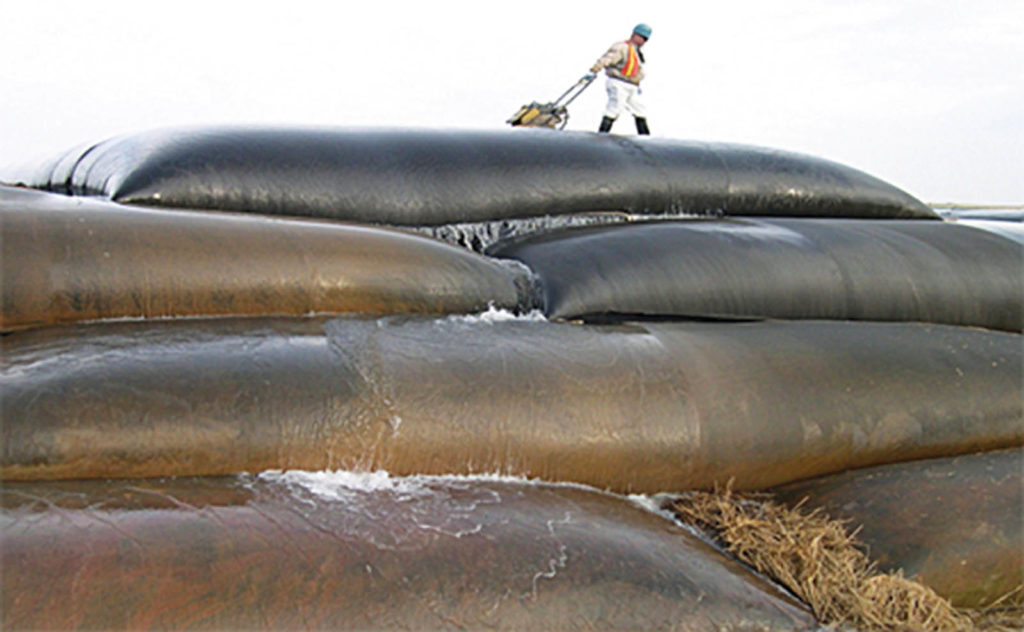
Geotextile tubes began as erosion control systems, originating in Denmark in the 1950s. The infill material is usually soil but can be waste materials as well; for example, ash, sludge residuals, tailings and similar materials. The maximum height of an individual tube is currently about 6.6 feet (2 meters) but tube stacking is customary to achieve greater heights (see Figure 1). A variation of these tubes, extremely large sand bags weighing up to 30 tons, has been used in Germany since the 1960s with reasonable success.
In the category of tubes, however, there are several variations. One is to use an impermeable coated fabric, or even a geomembrane, and then fill it with water. This means that mobilization before and demobilization after the high-water event can be done quickly, with no construction remaining after the flood is over. Proper anchorage is obviously necessary.
There are also reusable super-absorbent tubular barriers for home and business protection that are easier and quicker to deploy than traditional sand bags.
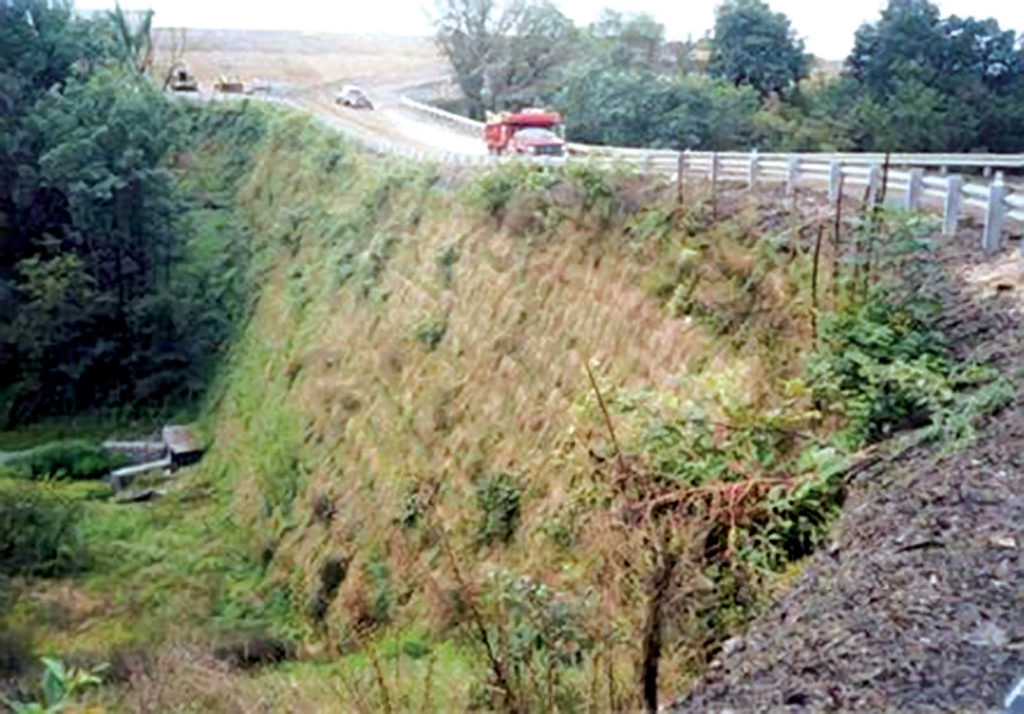
Geosynthetic reinforced walls and steep soil slopes have been a successful technology for some 40 years, and are incorporated under the generic terminology of mechanically stabilized earth (MSE) systems. Layers of geogrids or geotextiles are embedded with native soil in discrete layers of 8- to 24-inch (20- to 61-centimeter) spacings to form a coherent mass that has no technical height limit. They can even be built as back-to-back walls to minimize the footprint (see Figure 2).
Thousands of such systems have been built worldwide due mainly to their straightforward construction, resulting low cost, and (in this case) low footprint in comparison to unreinforced soil embankments, as with flood control levees. The side facing the water can be protected by a geomembrane for both seepage control and wave instability.
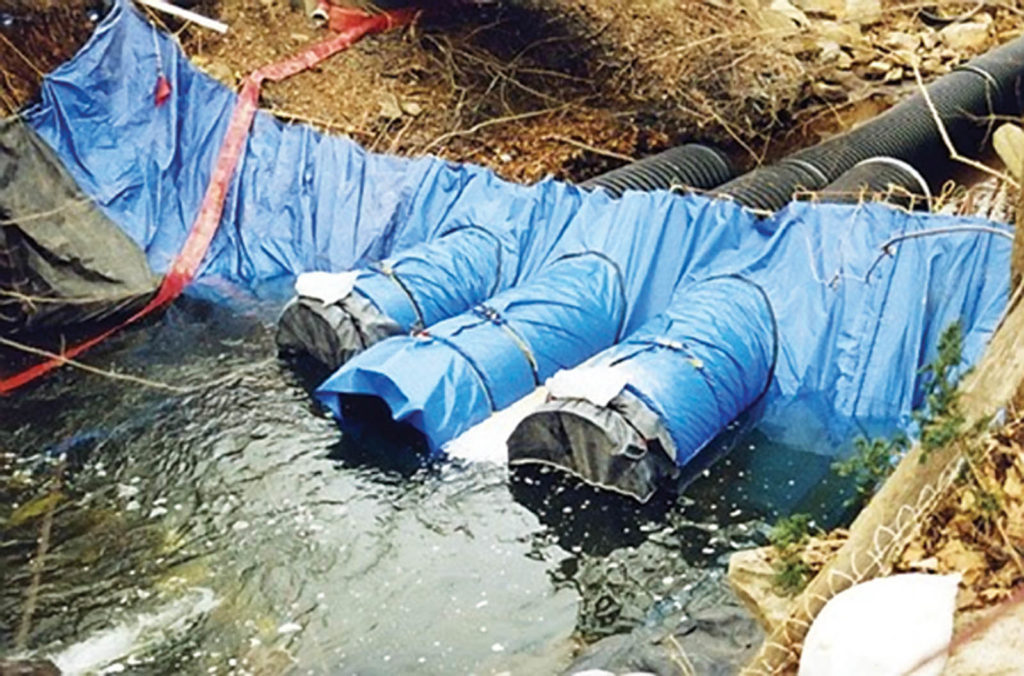
Steel strut-supported geomembranes use prefabricated steel struts in a triangular configuration at spacings from 7 to 10 feet (2 to 3 meters) to support a geomembrane for use as a water barrier (see Figure 3). An advantage of this method is that the system can be temporarily stored and rapidly assembled on-site; it parallels water-filled tubes in this regard. The usual geomembrane is scrim-reinforced, because connections and tensile stresses are significant. While the necessary footprint is small, the height is limited to about 5 feet (1.5 meters). There are several recent variations on this theme; however, the height of some systems is suitable only to flooding of very minor properties—for example, as little as one foot in height.
Interconnected polymer sheeting is the direct replica of interlocking steel sheeting, but uses a polymeric material, usually polyvinyl chloride (PVC). No plasticizer is used in the formulation, resulting in high bending stiffness. Alternative polymers are polypropylene and high density polyethylene. The sheets are sequentially driven using a lightweight pile-driving hammer to a depth about equal to the unsupported cantilever height. For higher heights, cable tiebacks or rods can be attached near the top of the sheeting and anchored behind the wall within the retained soils. With typical heights of 6 to 9 feet (2 to 3 meters), this system offers the smallest footprint of these four options. Figure 4 shows this type of wall (also called a bulkhead) with a deck structure encompassing it.
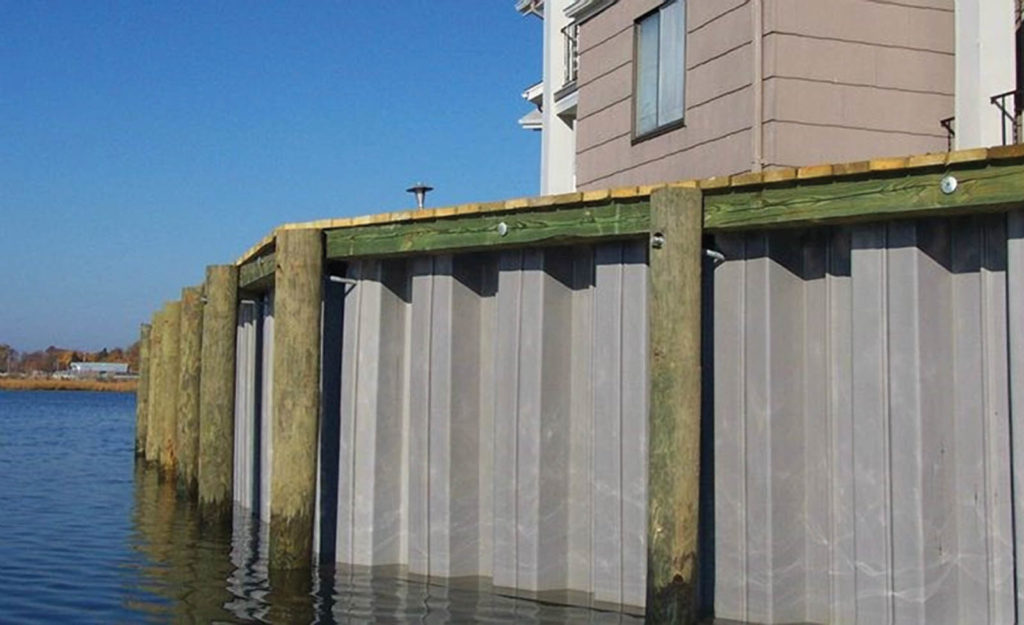
In summary, the traditional safeguards against flooding resulting from hurricane activity in coastal areas such as concrete walls, ground raising, building raising or simply moving to another location, are often impossible or extremely expensive in today’s built-up flood-prone communities. Geosynthetic systems are ongoing, effective and cost-competitive, and being developed and used by manufacturers and designers alike. These strategies provide meaningful choices to increasing threats.
Sidebar: Geosynthetics at work
Geosynthetic systems help to solve many civil, transportation, hydraulics and environmental engineering challenges.
Geomembranes are impermeable sheets used as barriers to liquids and/or gases.
Geotextiles are woven or nonwoven fabrics used in separation, filtration or reinforcement applications.
Geogrids are interconnected sets of ribs used for soil reinforcement.
Geonets are netlike structures used for in-plane drainage.
Geosynthetic clay liners are thin layers of bentonite clay between geotextiles used as barriers for various liquids.
Geocomposites are layered composites from any of the above, and may use other synthetic materials.
Robert M. Koerner’s interest in geosynthetic materials spans nearly 40 years of teaching, writing and consulting. His pioneering work has helped generations of educators, researchers, designers, manufacturers and regulators. George R. Koerner is the director of the Geosynthetic Institute in Folsom, Pa.
 TEXTILES.ORG
TEXTILES.ORG


